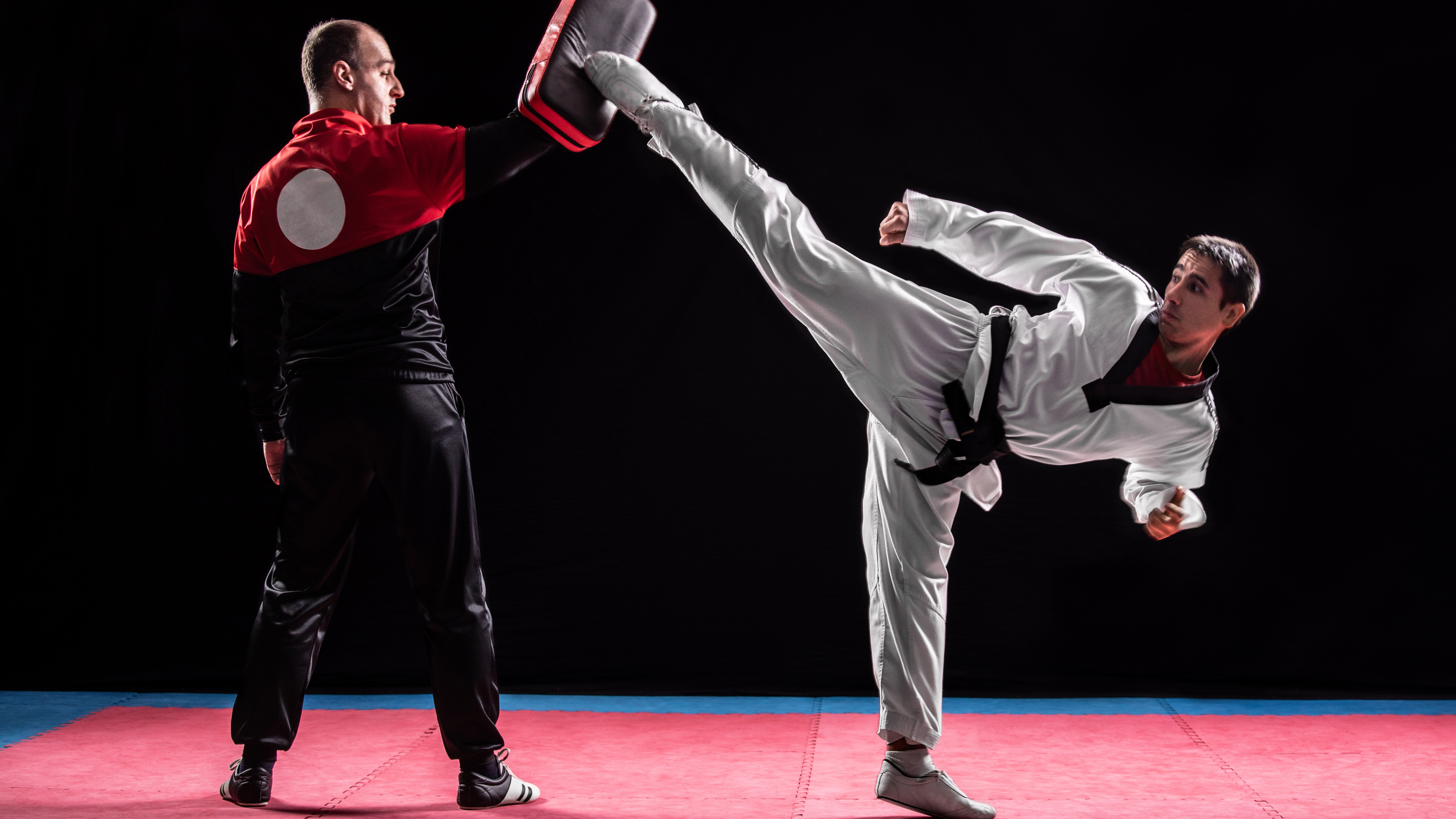
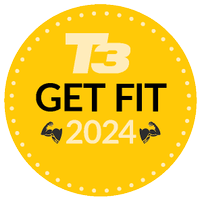
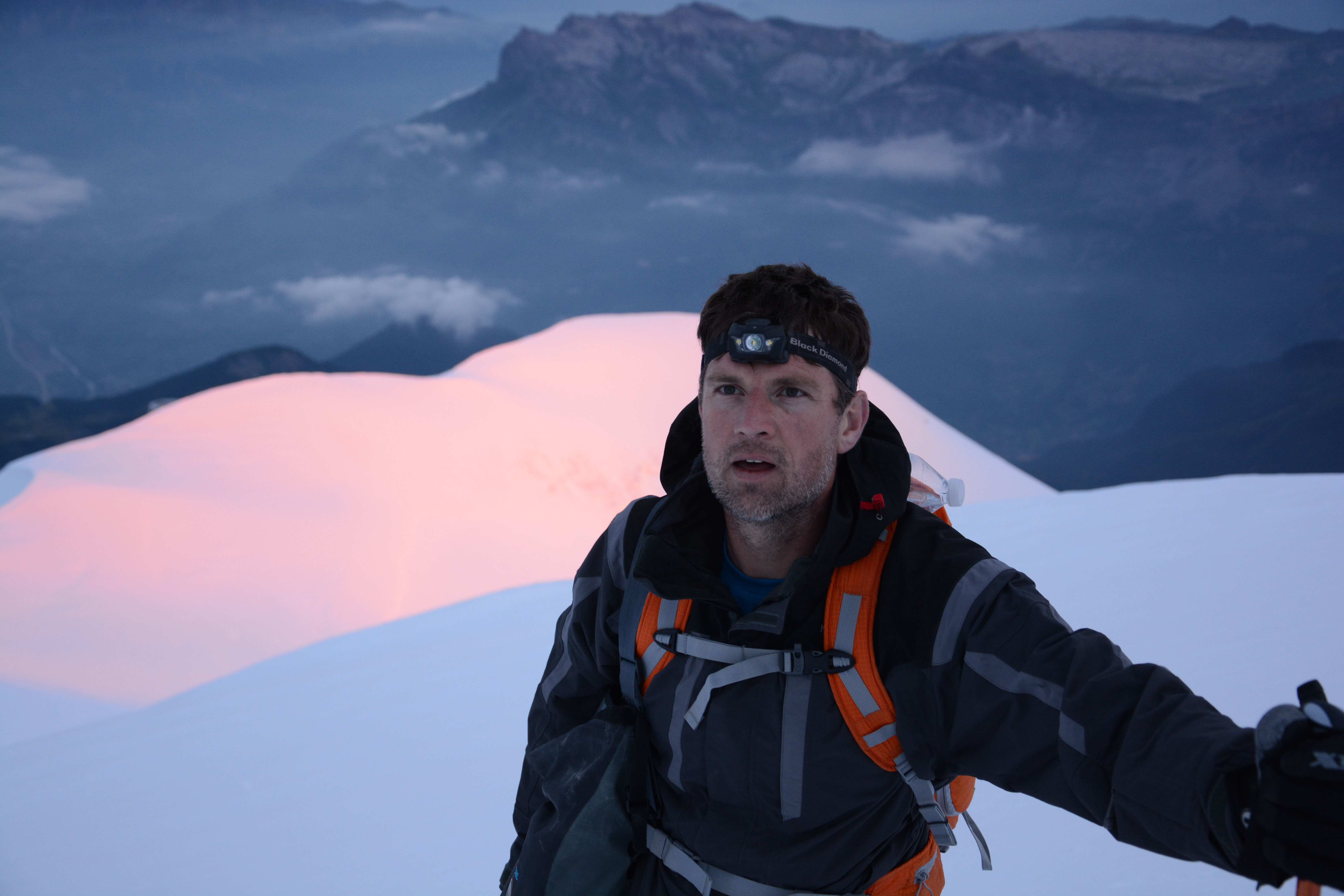
There are many forms of fitness, and your relationship with all of them changes with age. As a kid I could sprint around a football pitch for 90 minutes without warming up whatsoever, and the only soreness I’d feel afterwards came from crunching tackles. The mere thought of doing that now makes my muscles ache for days.
Decades later I took up sports like trail running and cycling, and still I’d lace up my running shoes and hit the hills, or start pedalling my mountain bike or road bike without doing a single stretch. That did start to take its toll, eventually, and I’ve been through all the usual spectrum of middle-age injuries and niggles, from hamstring twangs and knobbled knees to aching Achilles and sciatic pain. And the older I got, the longer it took to bounce back.
And then, in my mid 40s I took up taekwondo, and it changed my entire relationship with fitness.

Full stretch
There’s nowhere to hide when you’re doing martial arts. Whether you’re practising kicks on a punching bag, sparring with a partner at your local club or getting on the mat and fighting at a competition, if you’re not sufficiently stretched and properly warmed up, you’re going to get hurt. And not (just) by your opponent.
I started doing the Korean martial art of taekwondo mainly because I wanted my two daughters to learn some basic self-defence techniques to help keep them safe in this big bad world. The master at our local dojang was really encouraging, and I joined in too, because it was more fun to take part than to simply sit and watch, and I thought it would better enable me to keep the girls engaged and enthused.
Lockdown interruptions broke my eldest daughter’s connection with the sport, but my youngest stayed with it, and gradually, we worked our way through the belts together, learning kicks, punches, patterns, blocks, stances and holds.
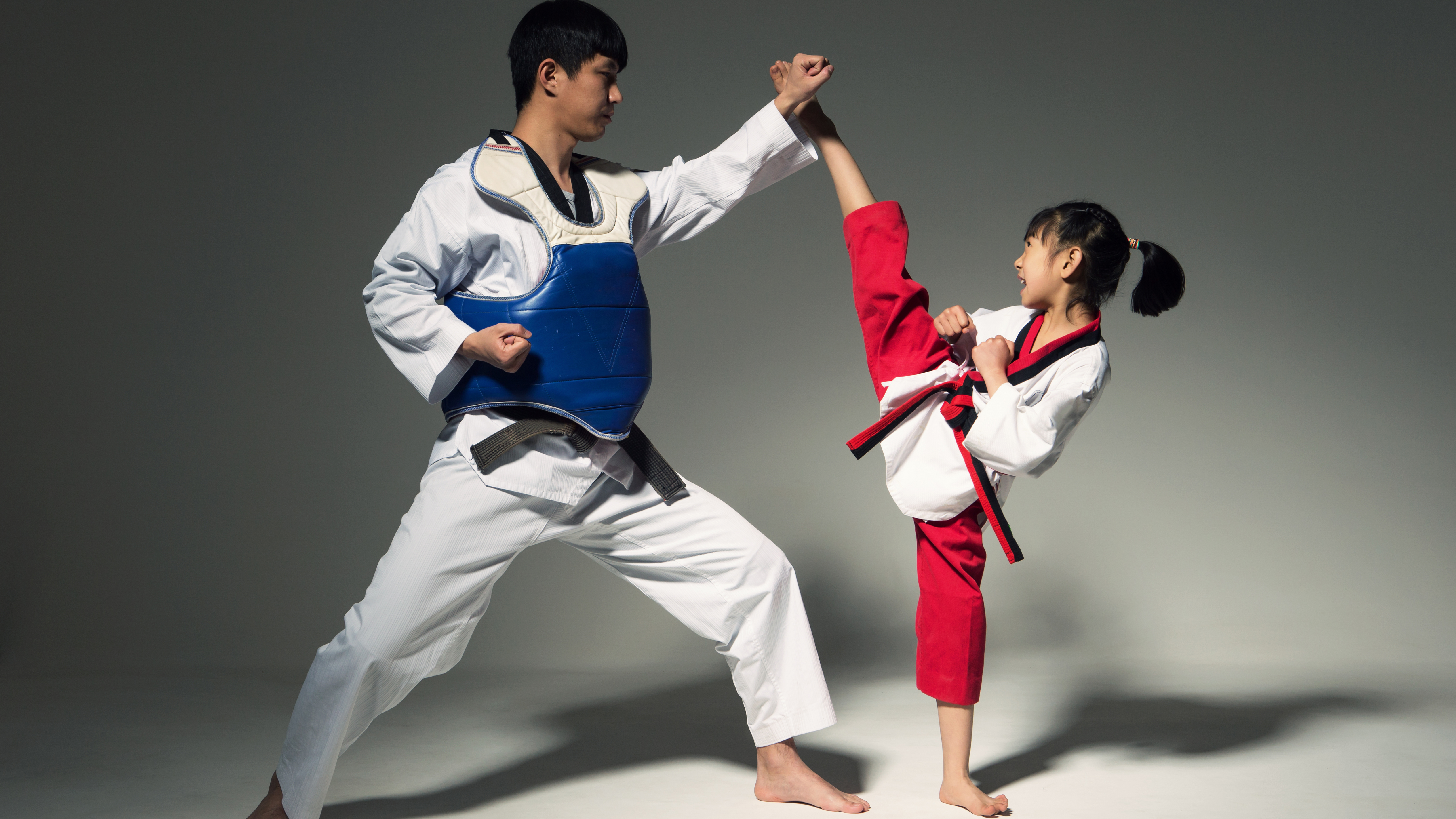
Now several years into our taekwondo journey, we train twice a week and have begun taking part in competitions all around the region and country. It’s become part of our lives, something special we share, and we’ve also been welcomed into a worldwide community of people who enjoy the sport. But one of the most important (and totally unexpected) takeaways from the whole experience for me is that I have – finally – learned to love stretching. And that has changed how I approach every physical activity I do.
Sign up to the T3 newsletter for smarter living straight to your inbox
Get all the latest news, reviews, deals and buying guides on gorgeous tech, home and active products from the T3 experts
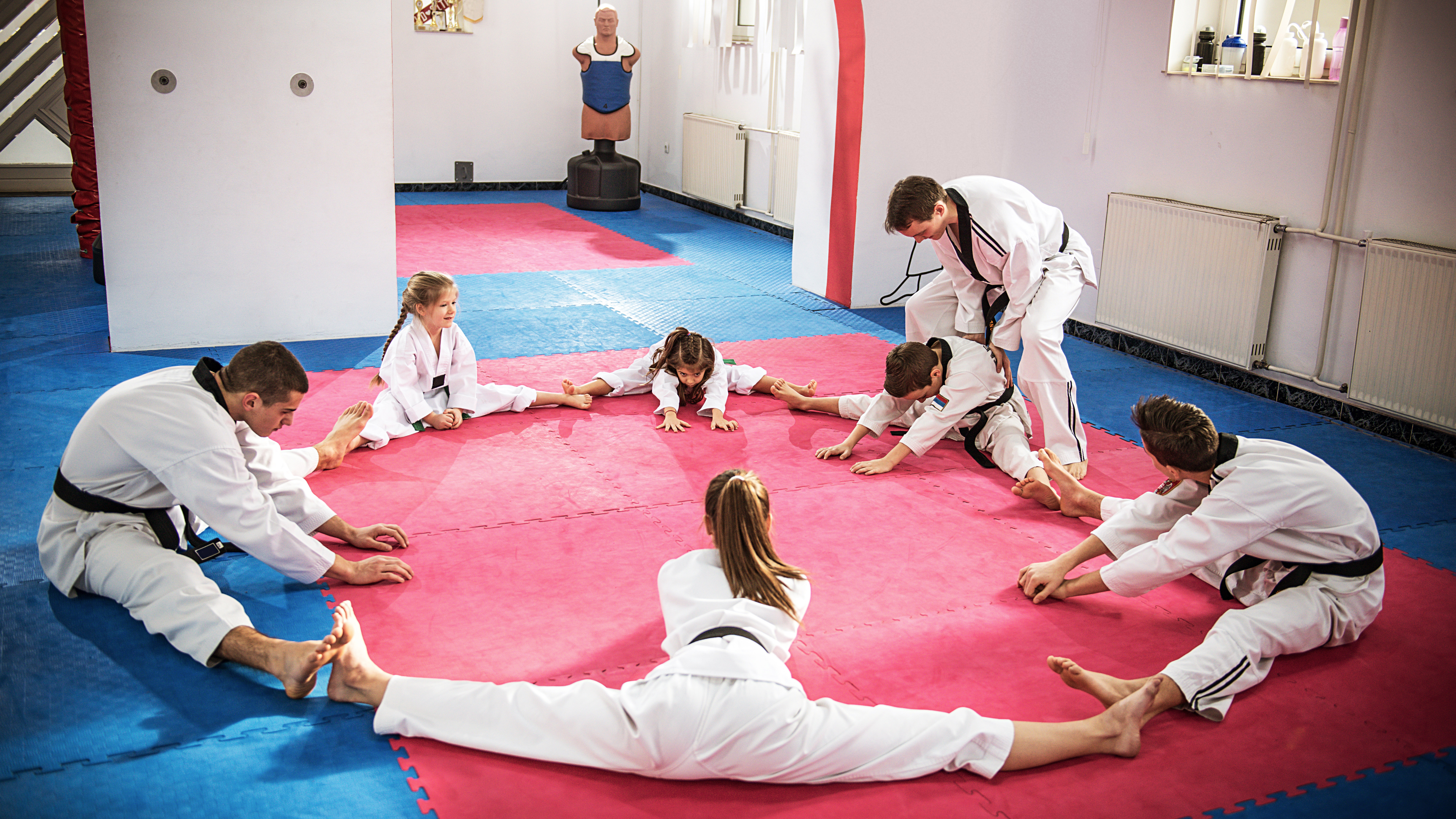
Fighting fit
Perhaps unsurprisingly, given that taekwondo originated within the Korean military (with elements taken from many ancient martial arts), the sport takes a regimented approach to preparedness. You don’t just rock up and start throwing kicks around – thankfully, otherwise, I would soon have been sidelined with serious injury. Instead, each session begins with a good half an hour of warm-up activity, stretches and strength-building exercises, ranging from push-ups, squats, burpees, planks and sit-ups to more sport-specific activities.
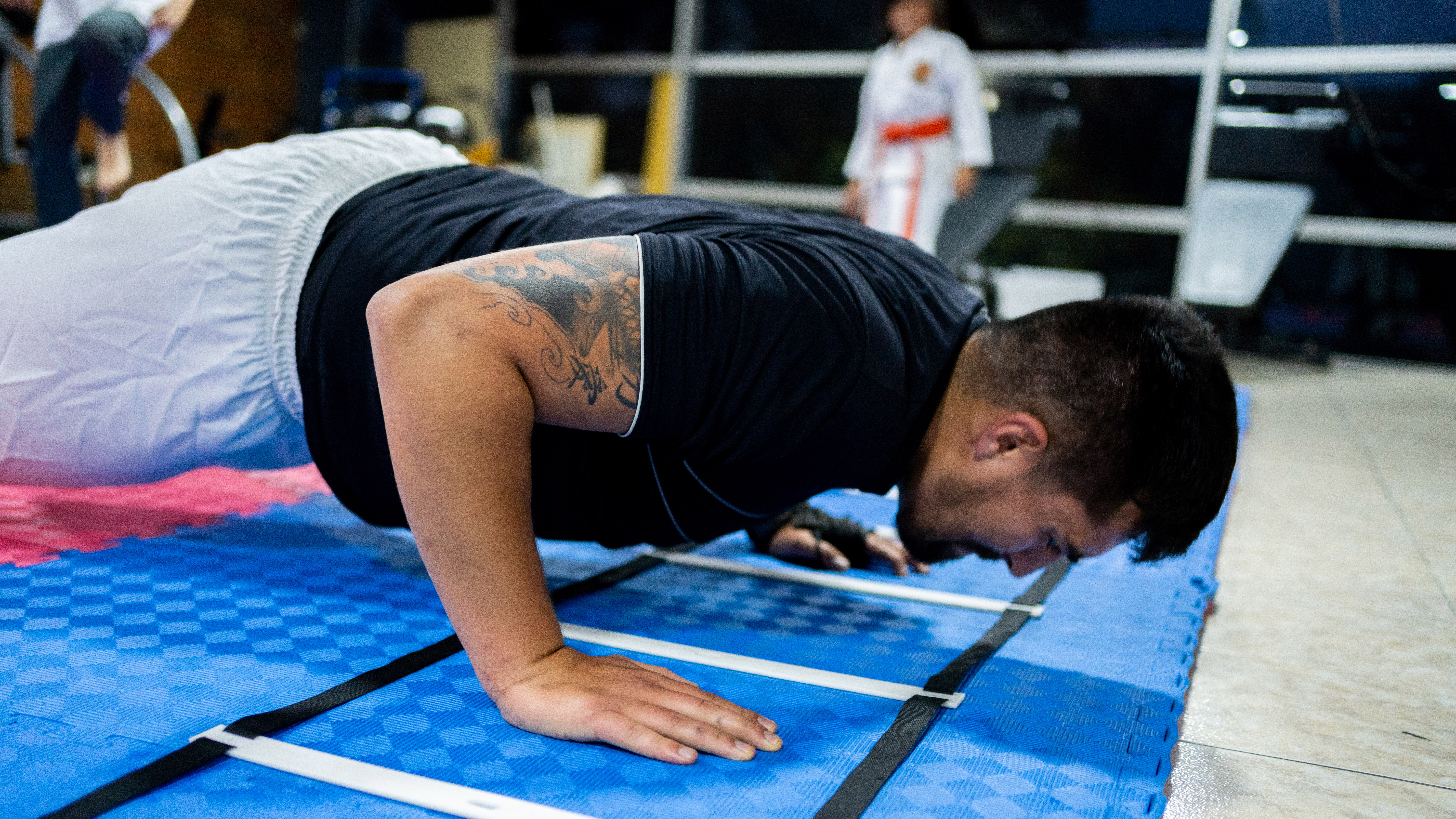
The stretching process both focuses the mind and loosens up your muscles, meaning you can perform better during the second part of the session, and over time the exercises noticeably strengthen your core, legs and arms – all of which pay massive dividends once you move on to kicking and punching pads, and ultimately start sparring with an opponent or fighting at competition.
The combat side of taekwondo is called kyorugi. Being on the receiving end of the techniques we learn is much easier when your body is tuned up, and the preparation part of each session sharpens your reaction times, too – because, of course, it’s always better to avoid or block a blow than simply absorbing the impact. Even with pads and gloves (taekwondo gloves are more minimalist than boxing and Muay Thai gloves) on, you definitely feel those hits when they land.
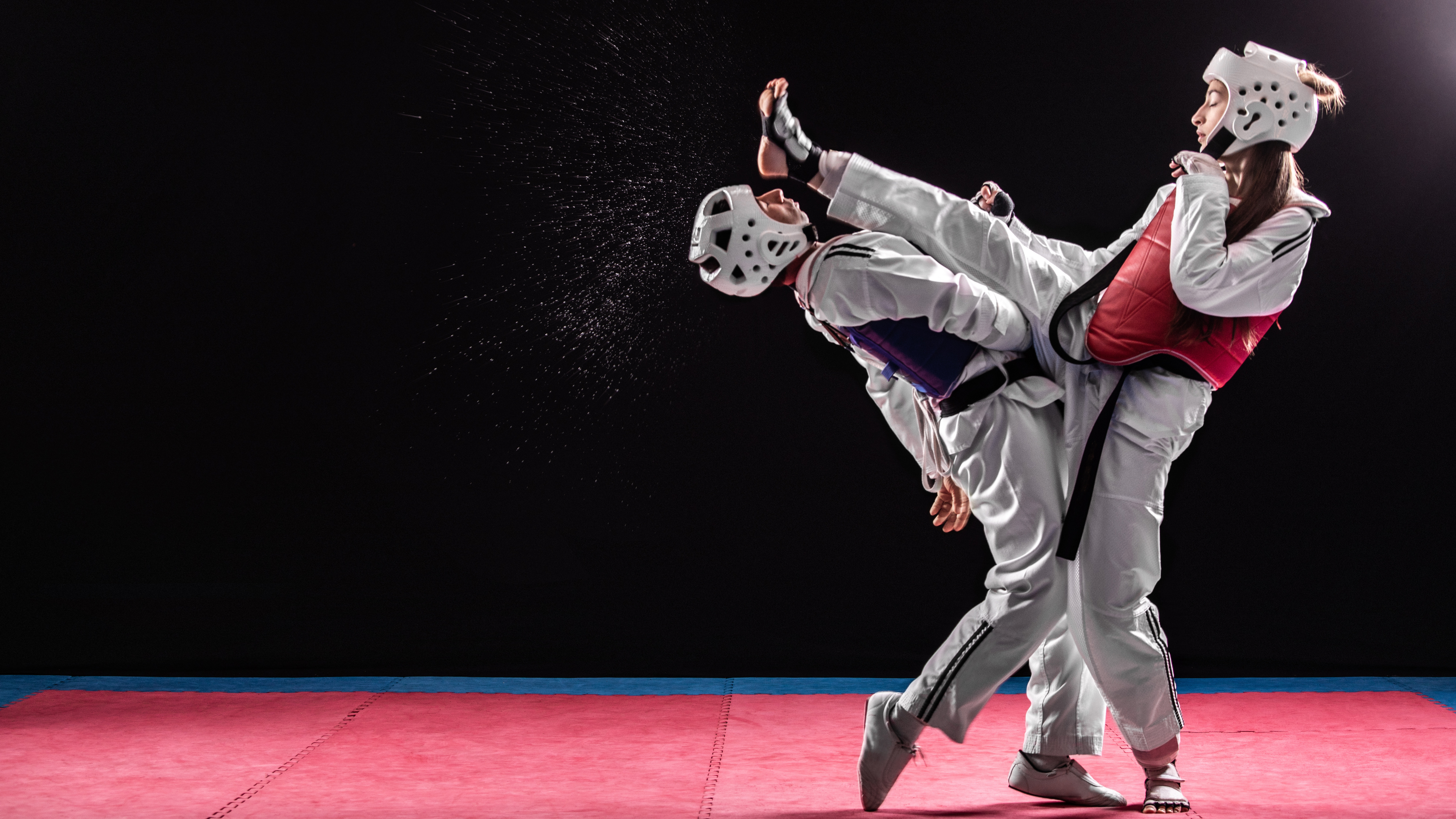
But you don’t have to get on the mat and fight. In taekwondo, as with most martial arts, there are patterns (poomsae) to learn, and practising these sequences of moves (which become increasingly complicated as you move up through the colour-graded belts) is an excellent memory exercise, and great for your mental health. There are self-defence techniques to master, too, and all of these things can be done at a competitive level or just for exercise and personal fulfilment – it’s entirely up to you.
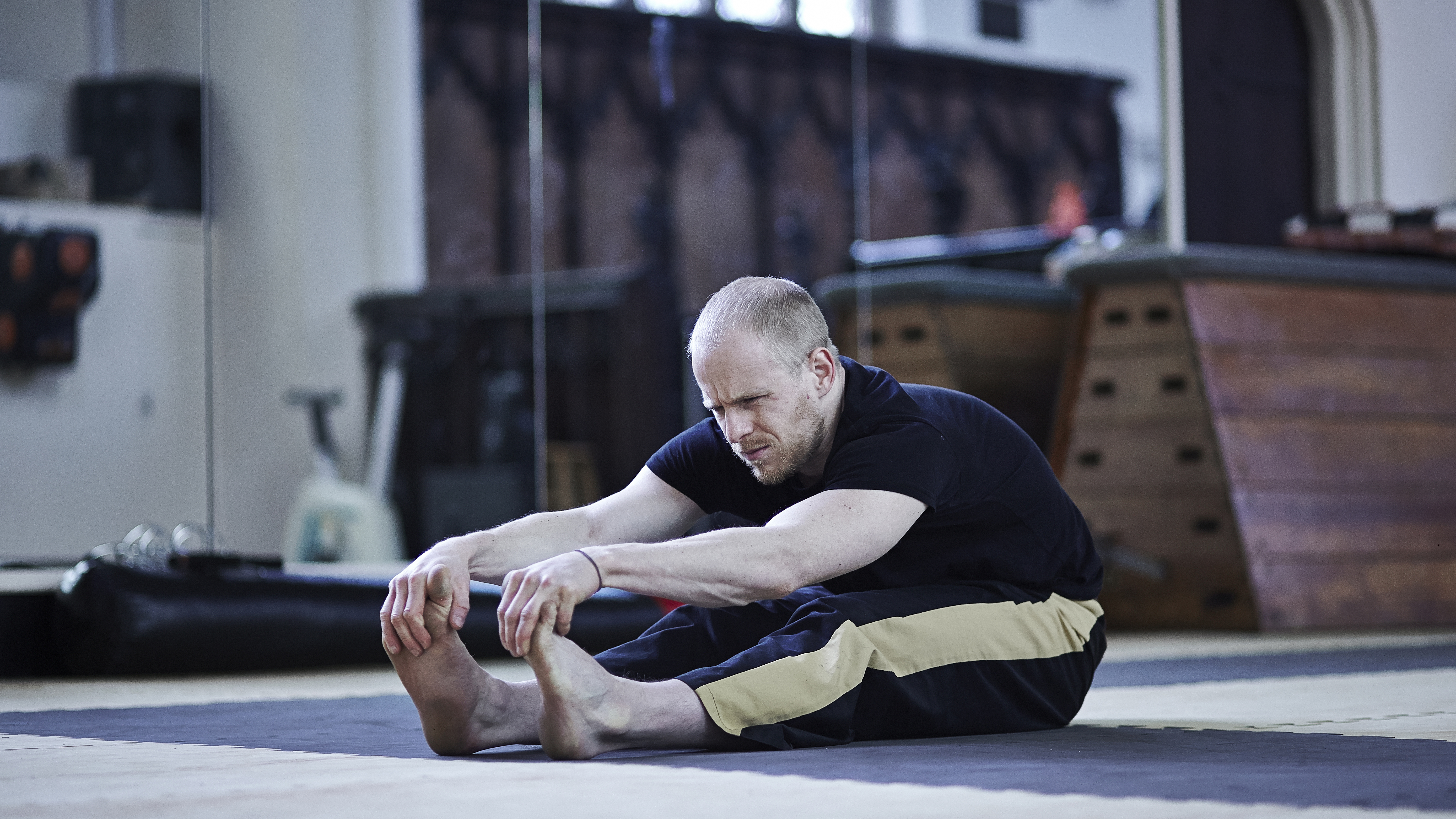
Beyond the dojang
As I became increasingly involved in the sport, I began to incorporate the stretches I had learned to love in the dojang into my daily routine and soon started to feel benefits that go well beyond the ability to throw my foot around at head height. My all-round flexibility started to improve enormously, as did my core strength and endurance, and my recovery after long runs and cycling escapades got so much quicker and easier.
Previously I could never seem to find the time to stretch before any given exercise, but now I know this was a false economy, and ultimately I’d lose weeks to injury because I’d failed to prepare myself properly before putting my body through stress. The most important thing taekwondo has taught me is patience, Now, I always do 15 to 20 minutes of stretching before hitting the trails, getting in the saddle or stepping on the mat, and a warm down after finishing. And I’ve been injury-free for ages.
If you're starting to feel your age, I highly recommend taking up a martial art. It might just revolutionise your approach to fitness, as it did for me, and help you stay active in all sorts of ways for much longer.
This feature is part of T3's Get Fit 2024 campaign. We’ll be bringing you a wealth of guides, features, deals and news to help you get healthy, fit and ready for anything the new year can throw at you. Whether you’re a newcomer to fitness or someone with a passion for it, we’ll bring you all the best workouts, diet advice and gear to set you on the right track.

Author of Caving, Canyoning, Coasteering…, a recently released book about all kinds of outdoor adventures around Britain, Pat Kinsella has been writing about outdoor pursuits and adventure sports for two decades. In pursuit of stories he’s canoed Canada’s Yukon River, climbed Mont Blanc and Kilimanjaro, skied and mountain biked across the Norwegian Alps, run ultras across the roof of Mauritius and through the hills of the Himalayas, and set short-lived speed records for trail-running Australia’s highest peaks and New Zealand’s nine Great Walks. A former editor of several Australian magazines he’s a longtime contributor to publications including Sidetracked, Outdoor, National Geographic Traveller, Trail Running, The Great Outdoors, Outdoor Fitness and Adventure Travel, and a regular writer for Lonely Planet (for whom he compiled, edited and co-wrote the Atlas of Adventure, a guide to outdoor pursuits around the globe). He’s authored guides to exploring the coastline and countryside of Devon and Dorset, and recently wrote a book about pub walks. Follow Pat's adventures on Strava and instagram.
-
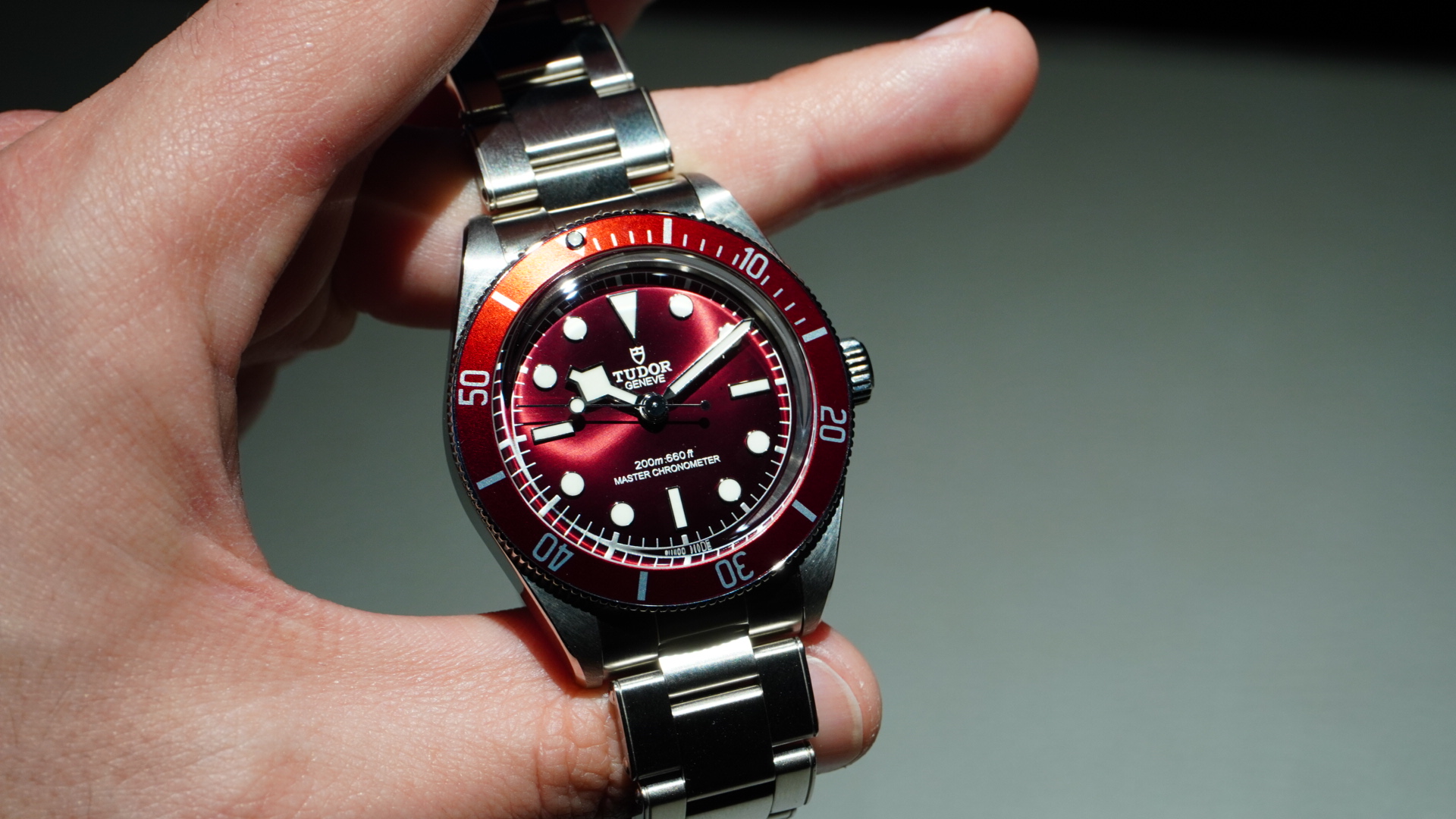 I tested every new Tudor at Watches and Wonders – my favourite caught me by surprise
I tested every new Tudor at Watches and Wonders – my favourite caught me by surpriseThe Rolex sister brand had a lot to offer
By Sam Cross Published
-
 Warning: Ciele’s refreshed Elite Collection may cause excessive garment envy on race day
Warning: Ciele’s refreshed Elite Collection may cause excessive garment envy on race dayFlex on your run crew with Ciele’s latest drop
By Matt Kollat Published
-
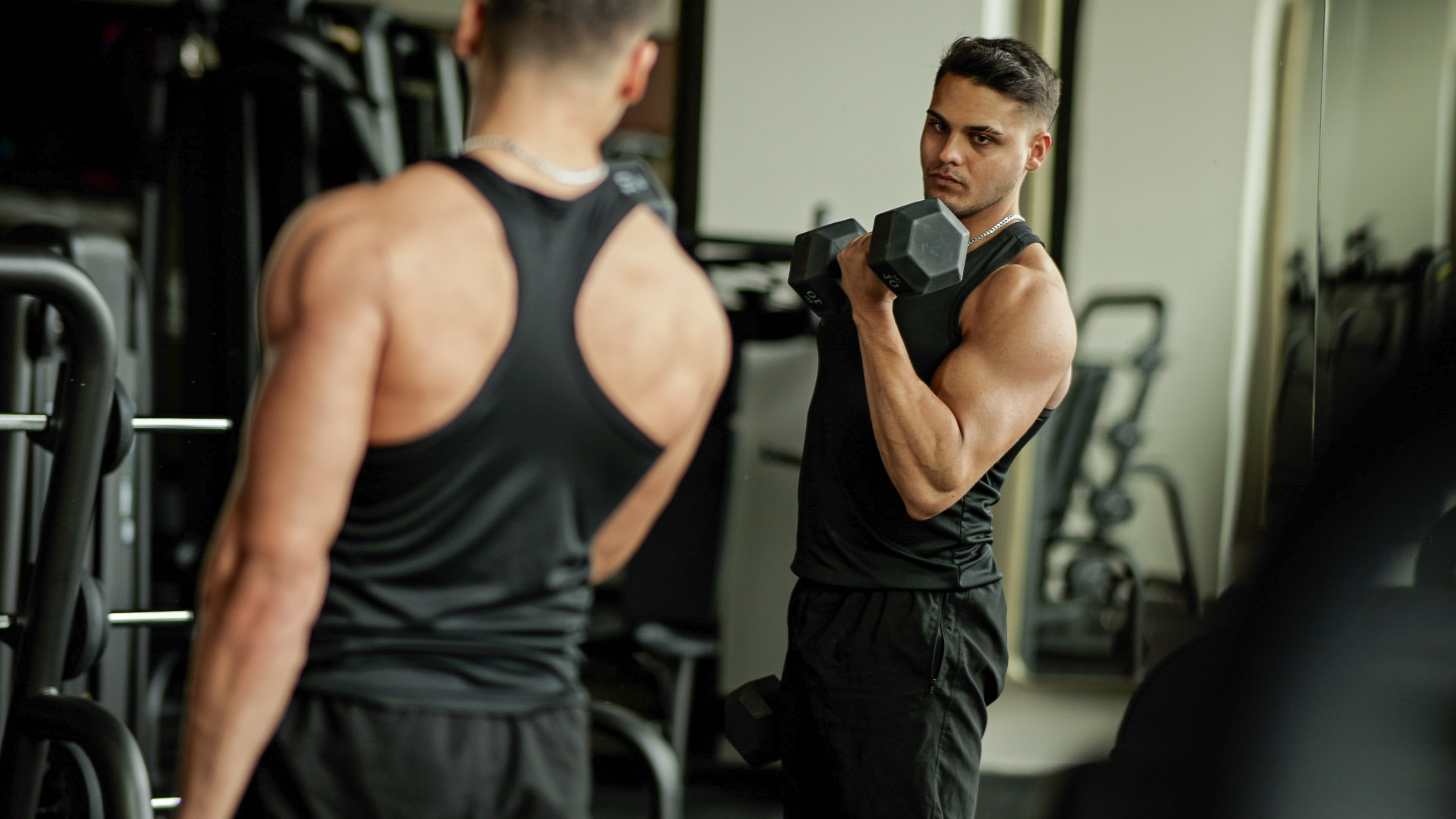 The best biceps exercise, according to science
The best biceps exercise, according to scienceHave you been training your biceps wrong this whole time?
By Lucy Miller Published
-
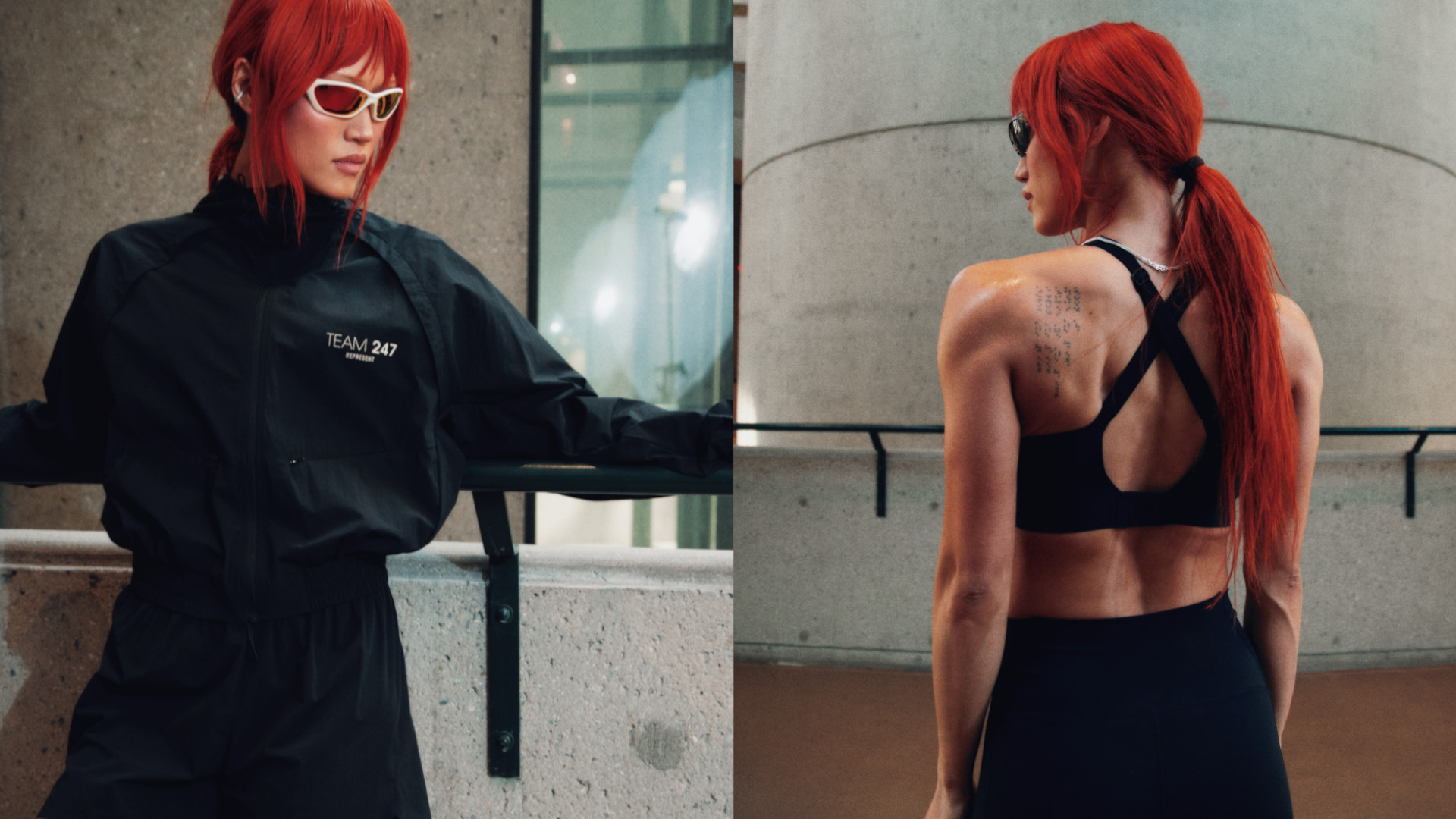 Finally! Represent 247 launches its first womenswear collection, taking you from street to gym in style
Finally! Represent 247 launches its first womenswear collection, taking you from street to gym in styleIt's about time guys
By Bryony Firth-Bernard Published
-
 3 chest exercises you’re probably not doing to supersize your pecs
3 chest exercises you’re probably not doing to supersize your pecsA killer pec pump awaits
By Bryony Firth-Bernard Published
-
 When’s the best time to take creatine?
When’s the best time to take creatine?The science-backed supplement is a must for building strength and muscle, but is there an optimal time to take it?
By Bryony Firth-Bernard Published
-
 Three overrated core exercises and what you should do instead
Three overrated core exercises and what you should do insteadA fitness expert says these exercises aren’t all they’re cracked up to be
By Bryony Firth-Bernard Published
-
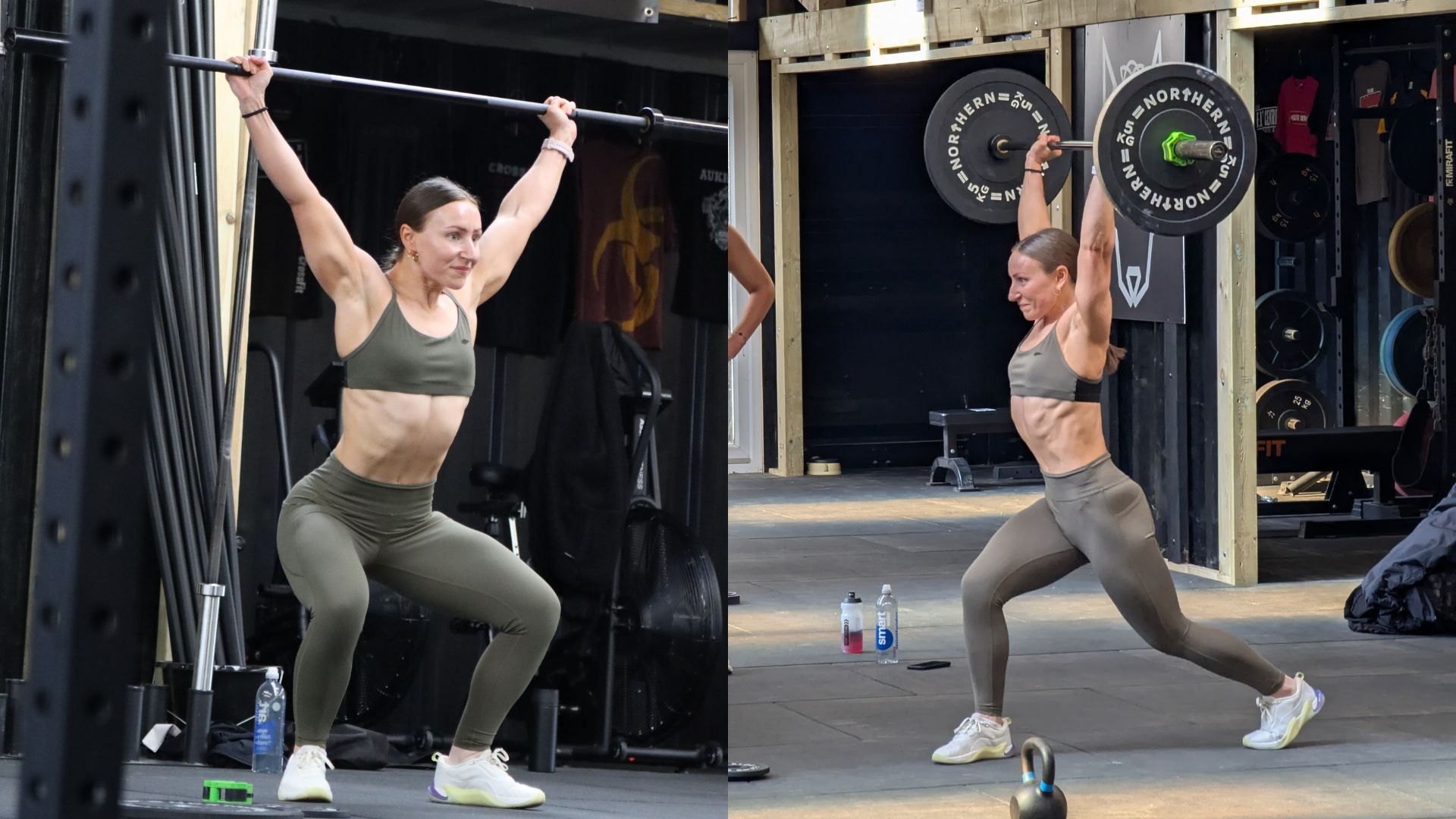 I tried Olympic weightlifting for the first time – here are three things it's taught me
I tried Olympic weightlifting for the first time – here are three things it's taught meBeing strong simply won't cut it
By Bryony Firth-Bernard Published
-
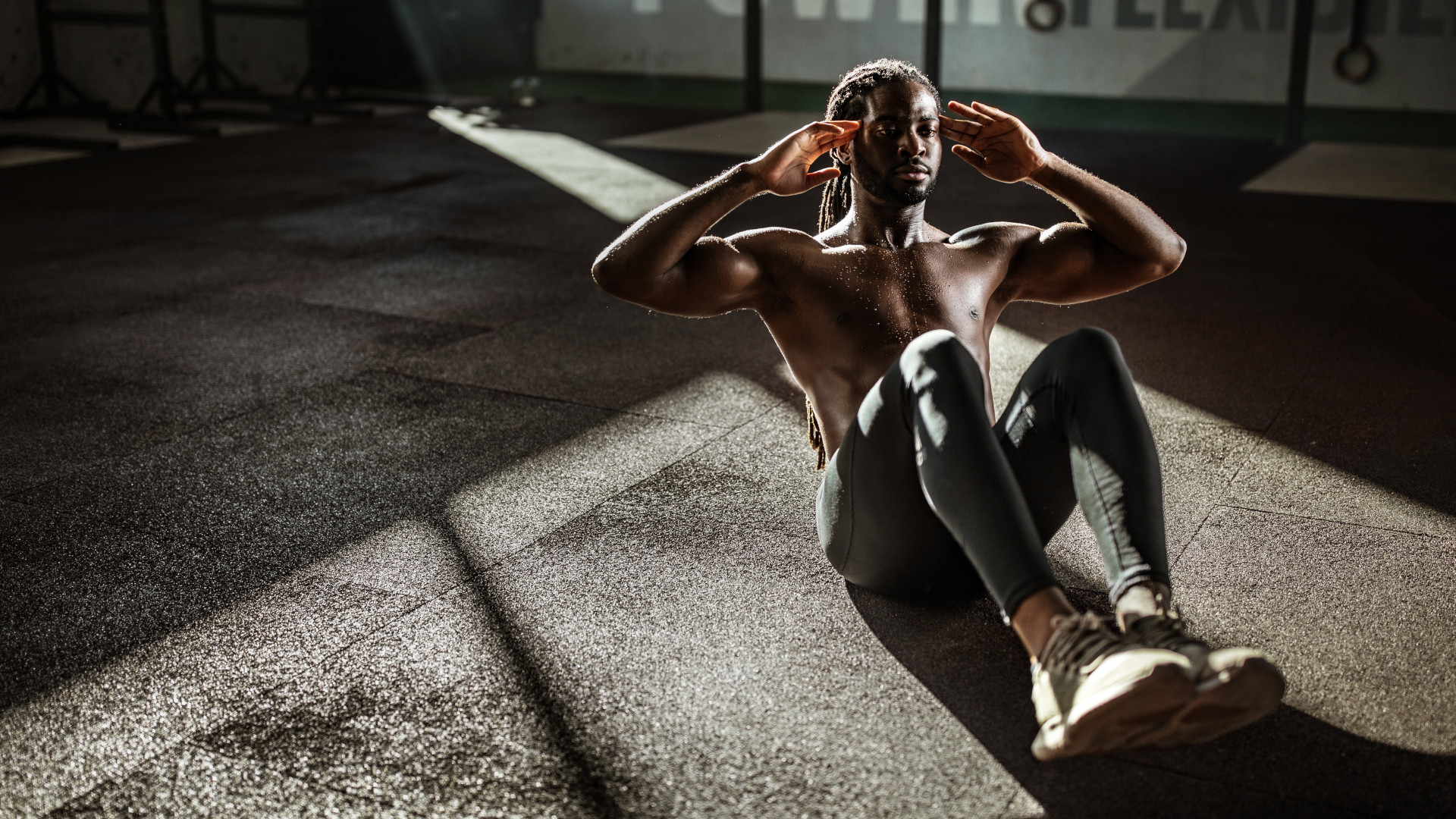 An exercise scientist ranks every ab exercise – and the worst one may surprise you
An exercise scientist ranks every ab exercise – and the worst one may surprise youFYI it’s not crunches or sit-ups
By Bryony Firth-Bernard Published
-
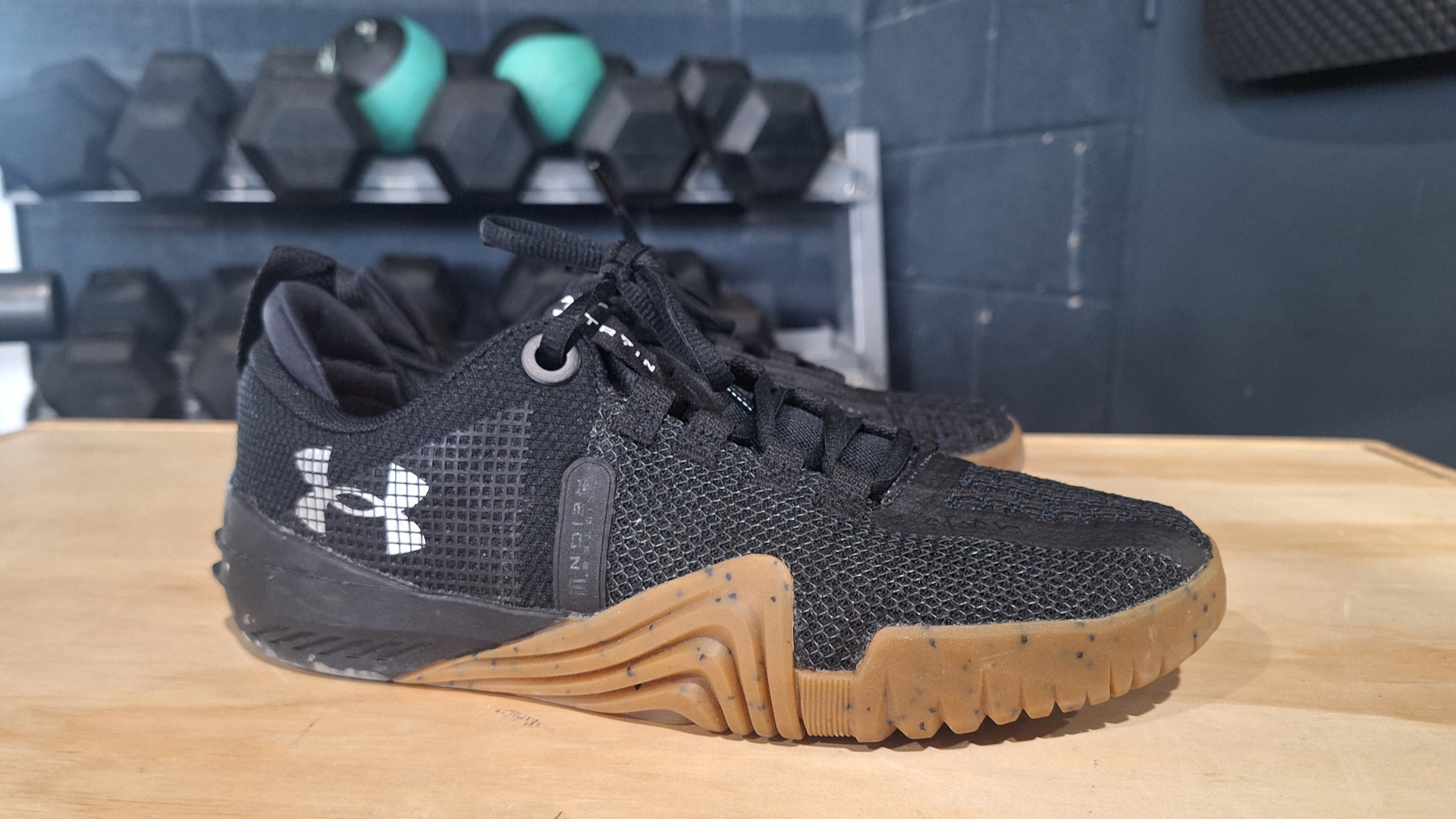 I didn't think Under Armour could improve its top-tier workout shoes – I was wrong
I didn't think Under Armour could improve its top-tier workout shoes – I was wrongThe TriBase Reign 6 has had a complete overhaul, with a flatter sole, improved flexibility and a brand-new look
By Bryony Firth-Bernard Published